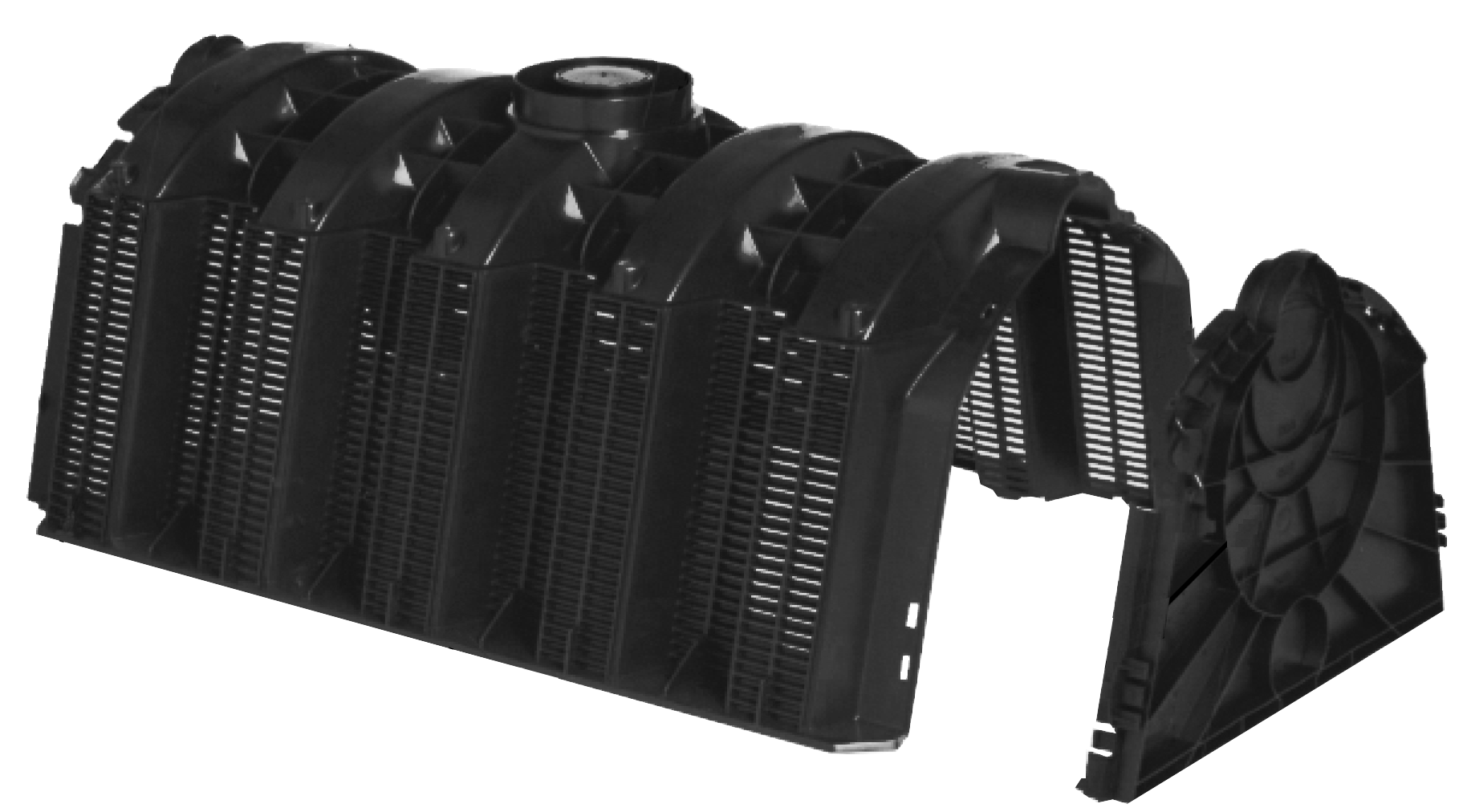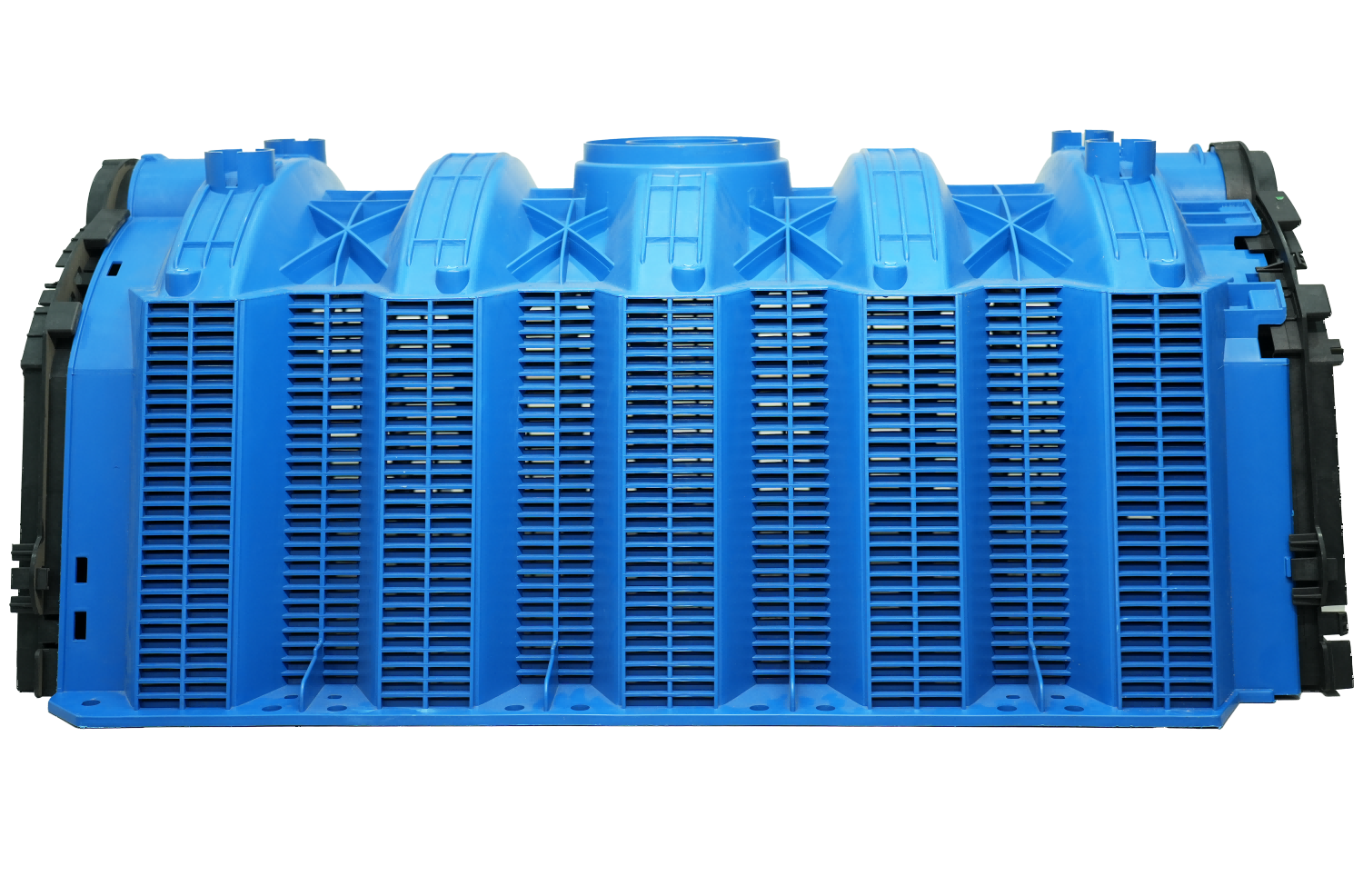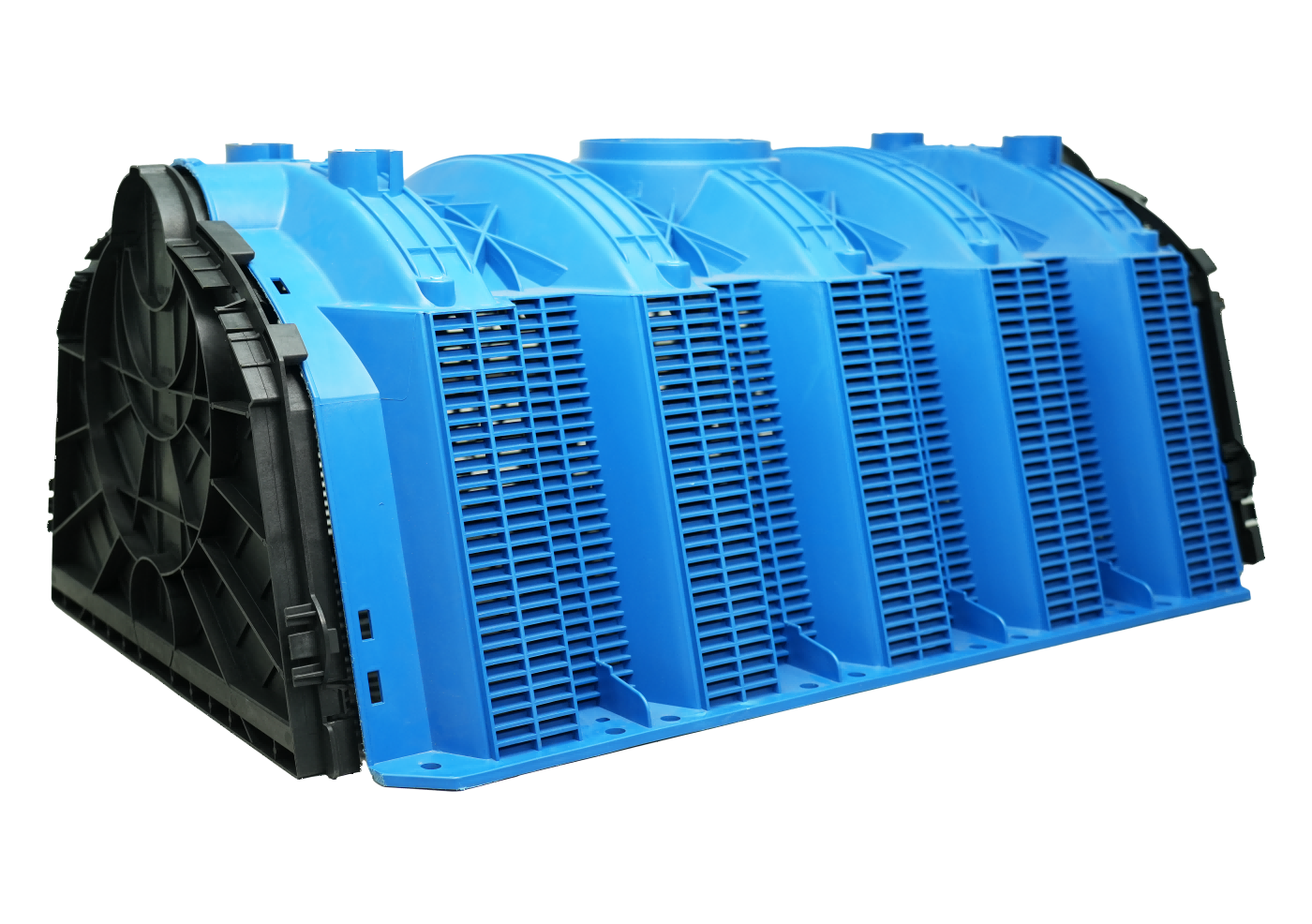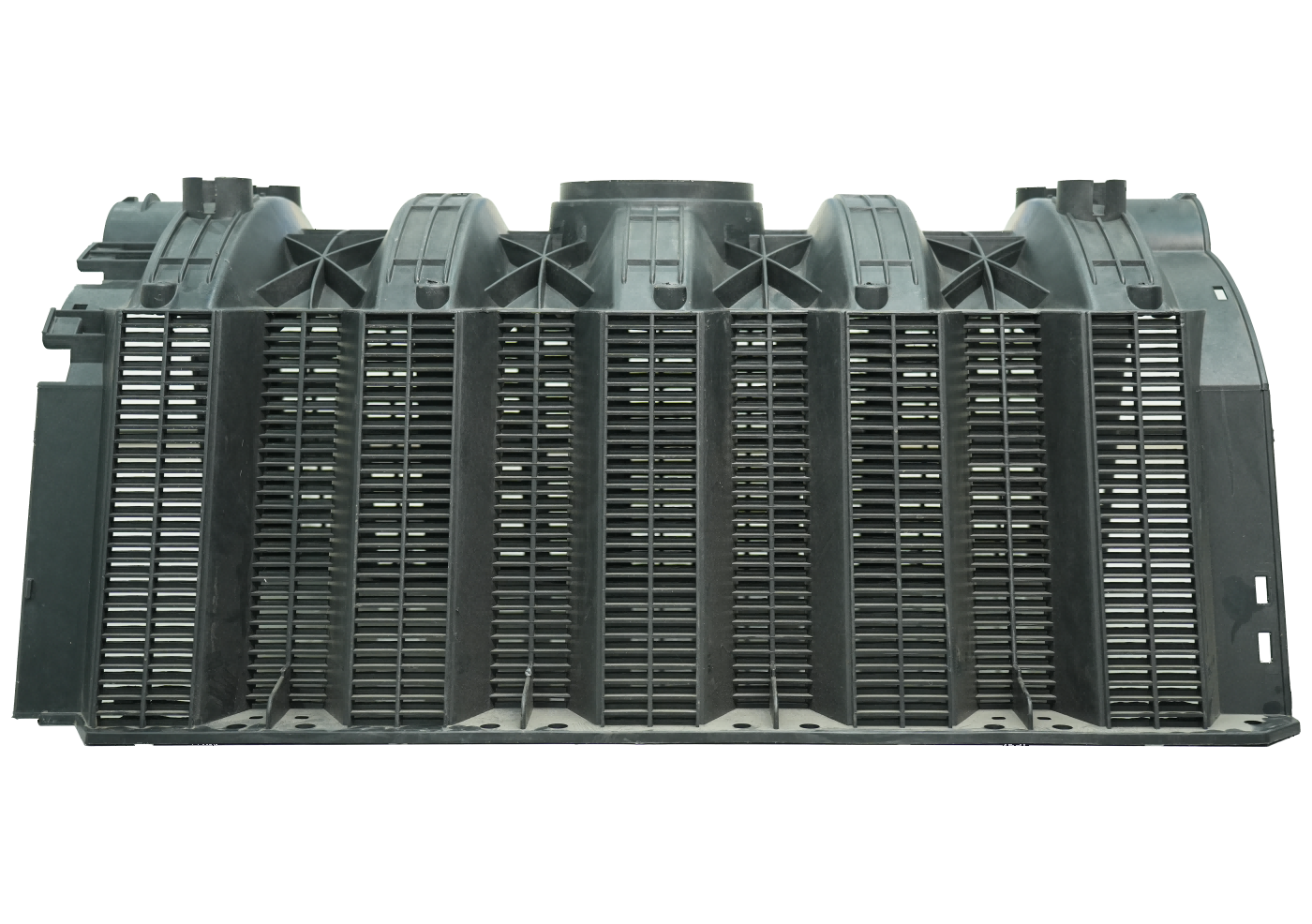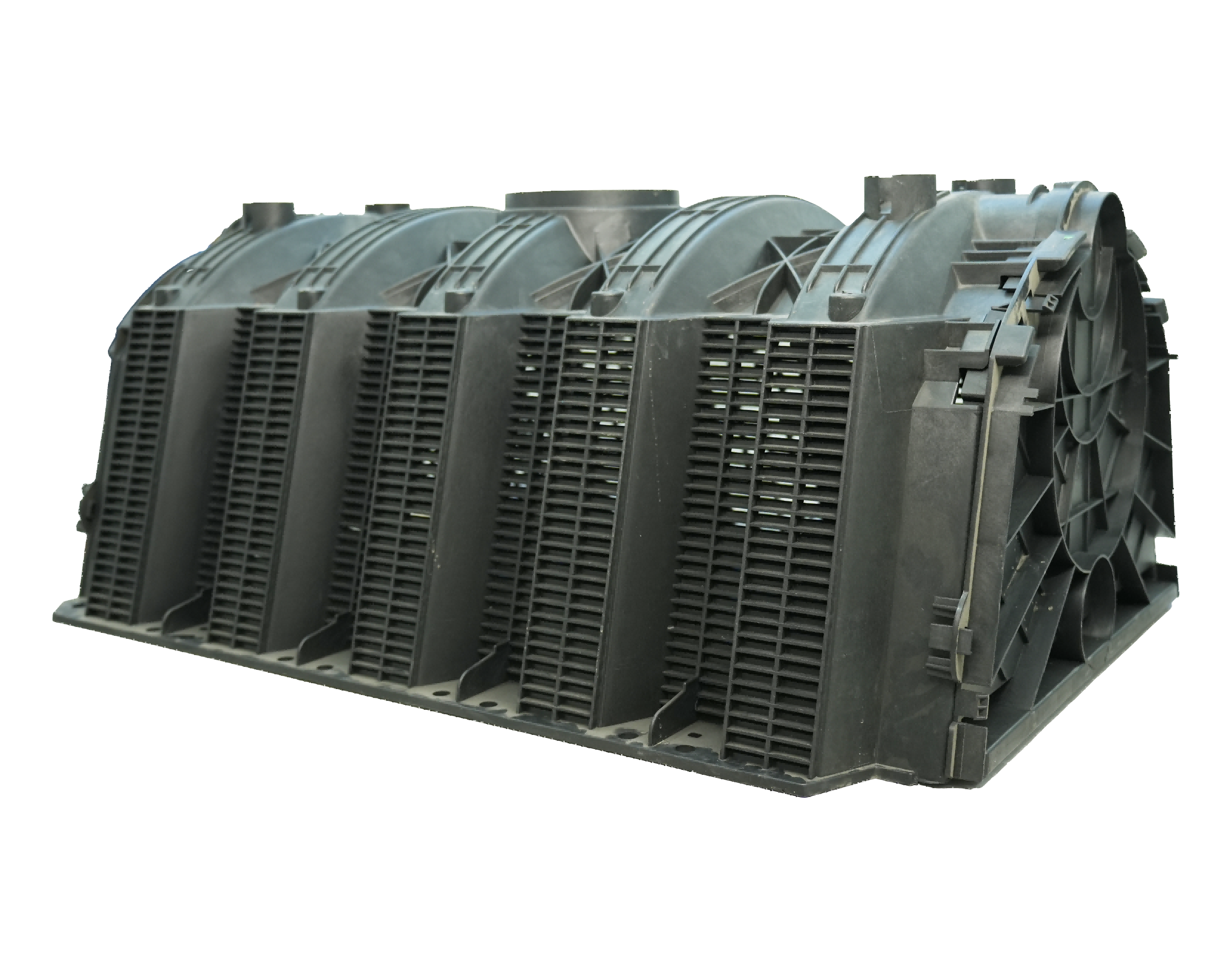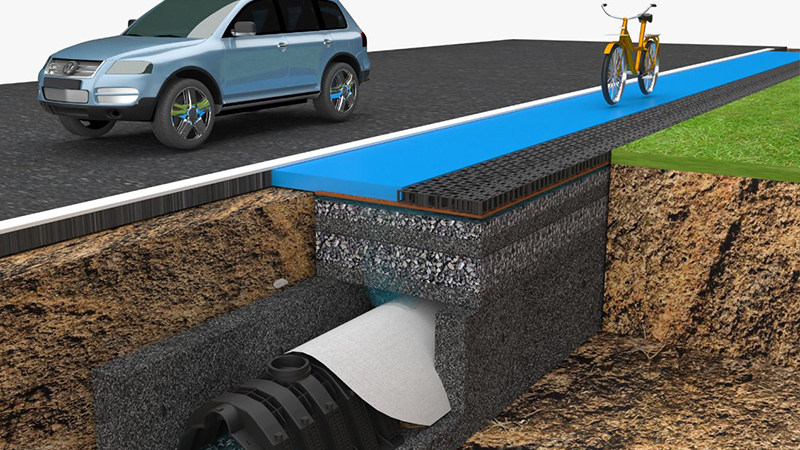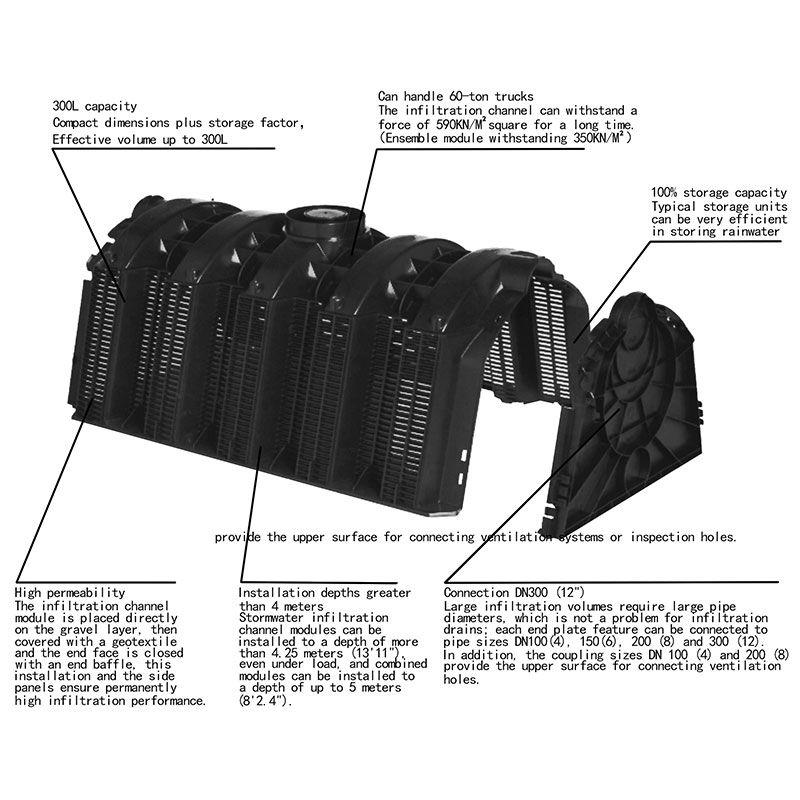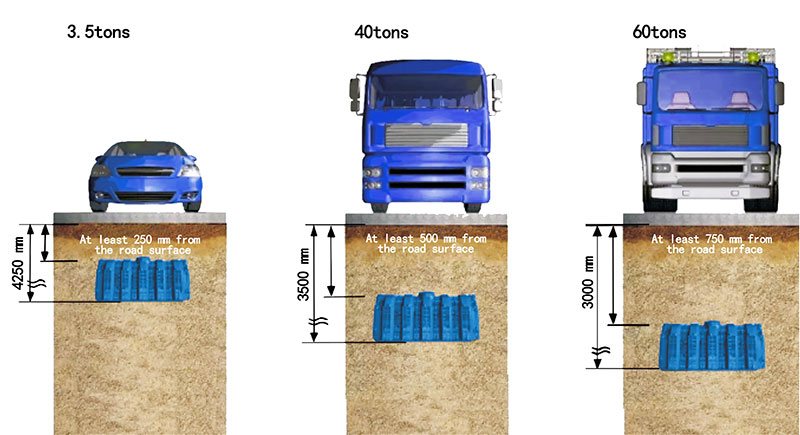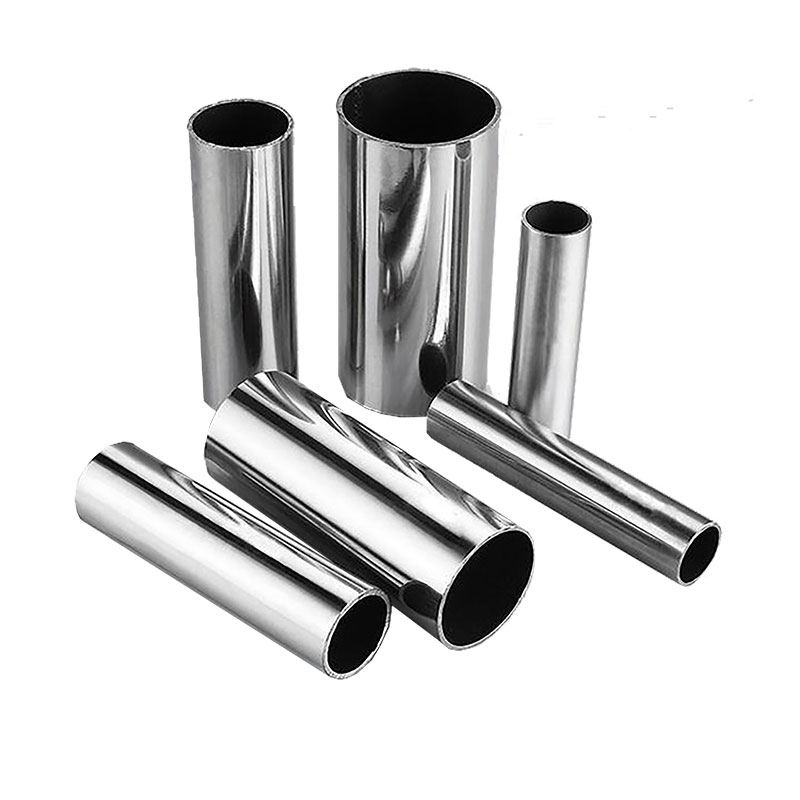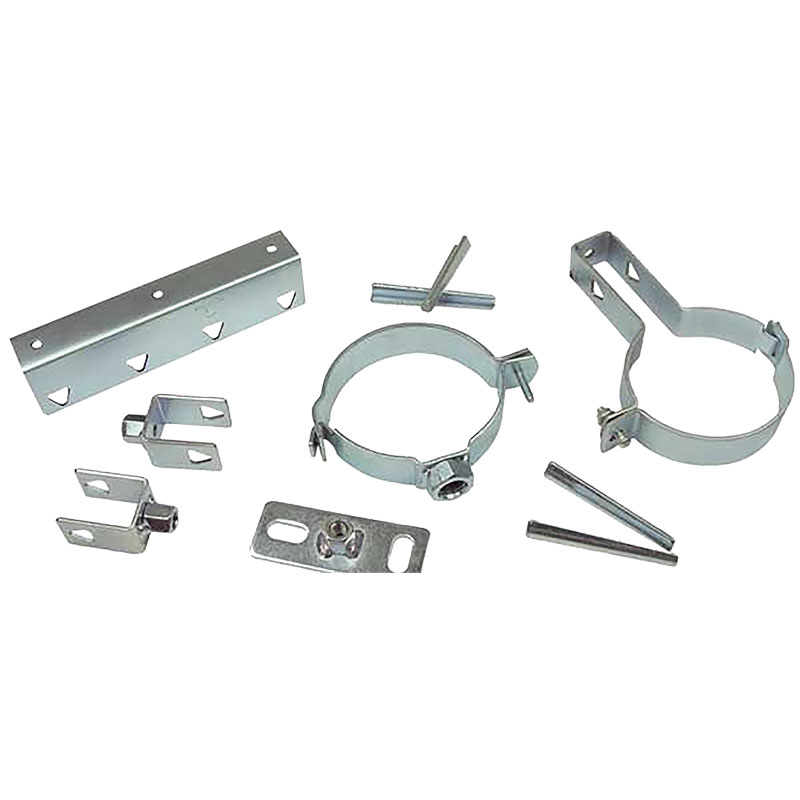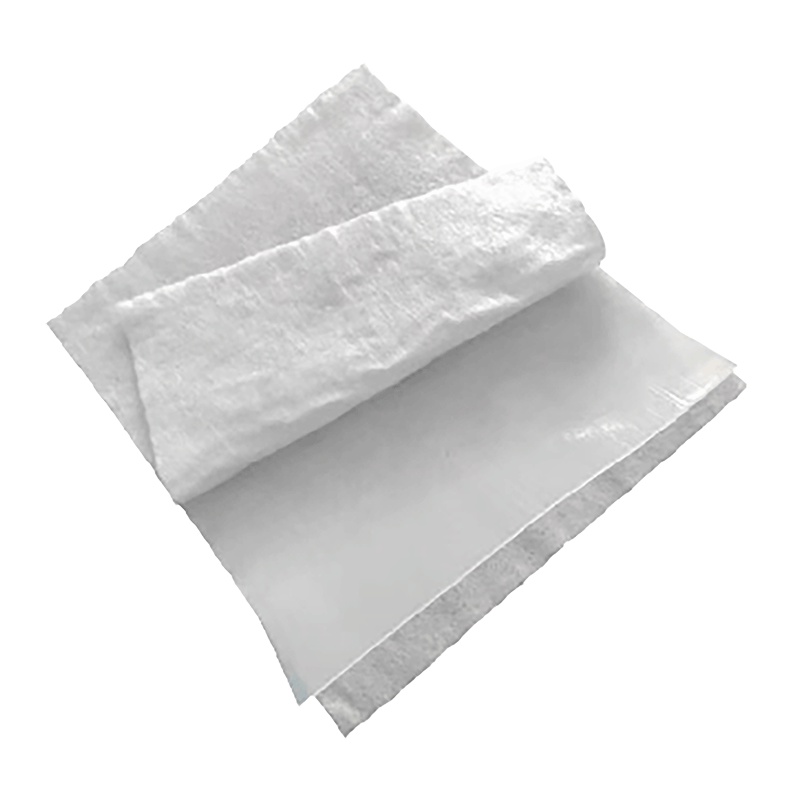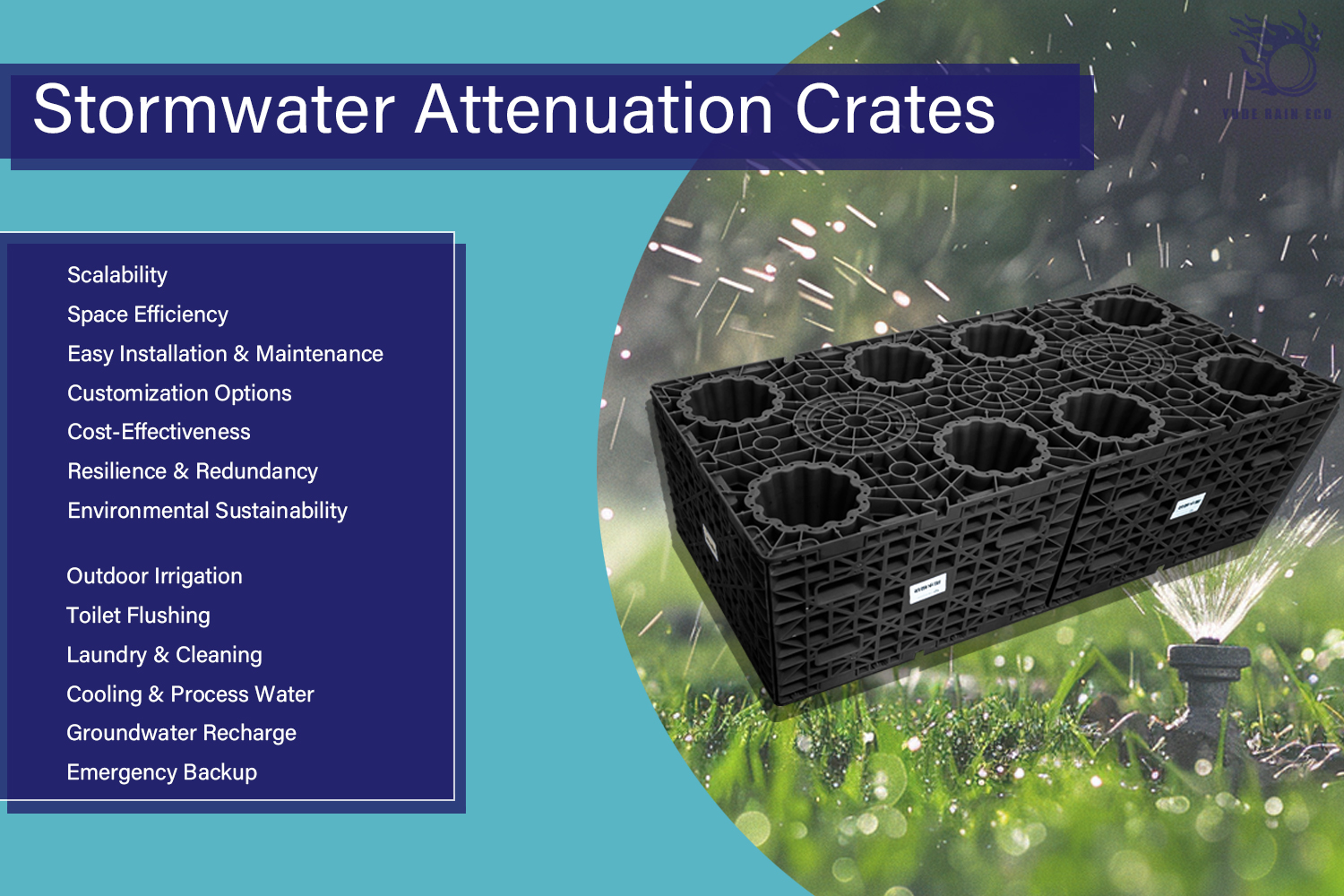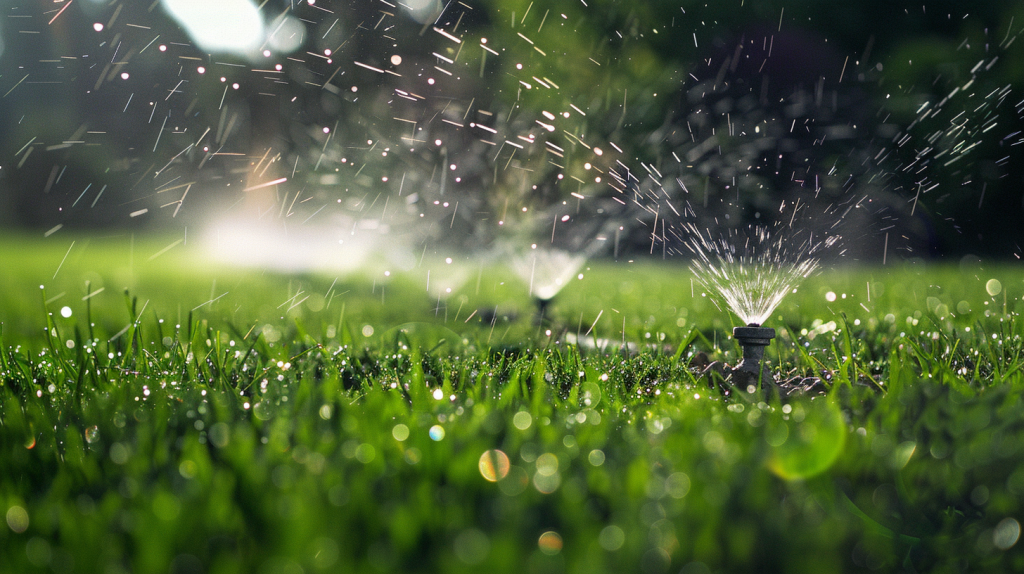Stormwater Infiltration Drain tunnels-YD StormFlow® installation process
- Site Preparation: Clear the area of debris and vegetation. Ensure the site is level and has proper drainage patterns.
- Excavation: Dig a trench or pit according to the specifications of the infiltration system. The size will depend on the design and anticipated water flow.
- Base Layer: Place a layer of gravel or crushed stone at the bottom of the excavation to facilitate drainage and support the infiltration pipe.
- Pipe Installation: Position the perforated infiltration pipe (drain) within the trench. Ensure the perforations are facing downward for effective infiltration.
- Backfilling: Surround the pipe with additional gravel, covering it adequately to promote water flow while allowing for infiltration. Leave space for soil cover if needed.
- Final Grading: Level the top layer of soil to ensure proper runoff toward the infiltration system.
- Vegetation (optional): Plant grass or other vegetation over the system to enhance aesthetics and further improve infiltration.
- Maintenance Access: Ensure access points for future maintenance and inspection are included in the design.

